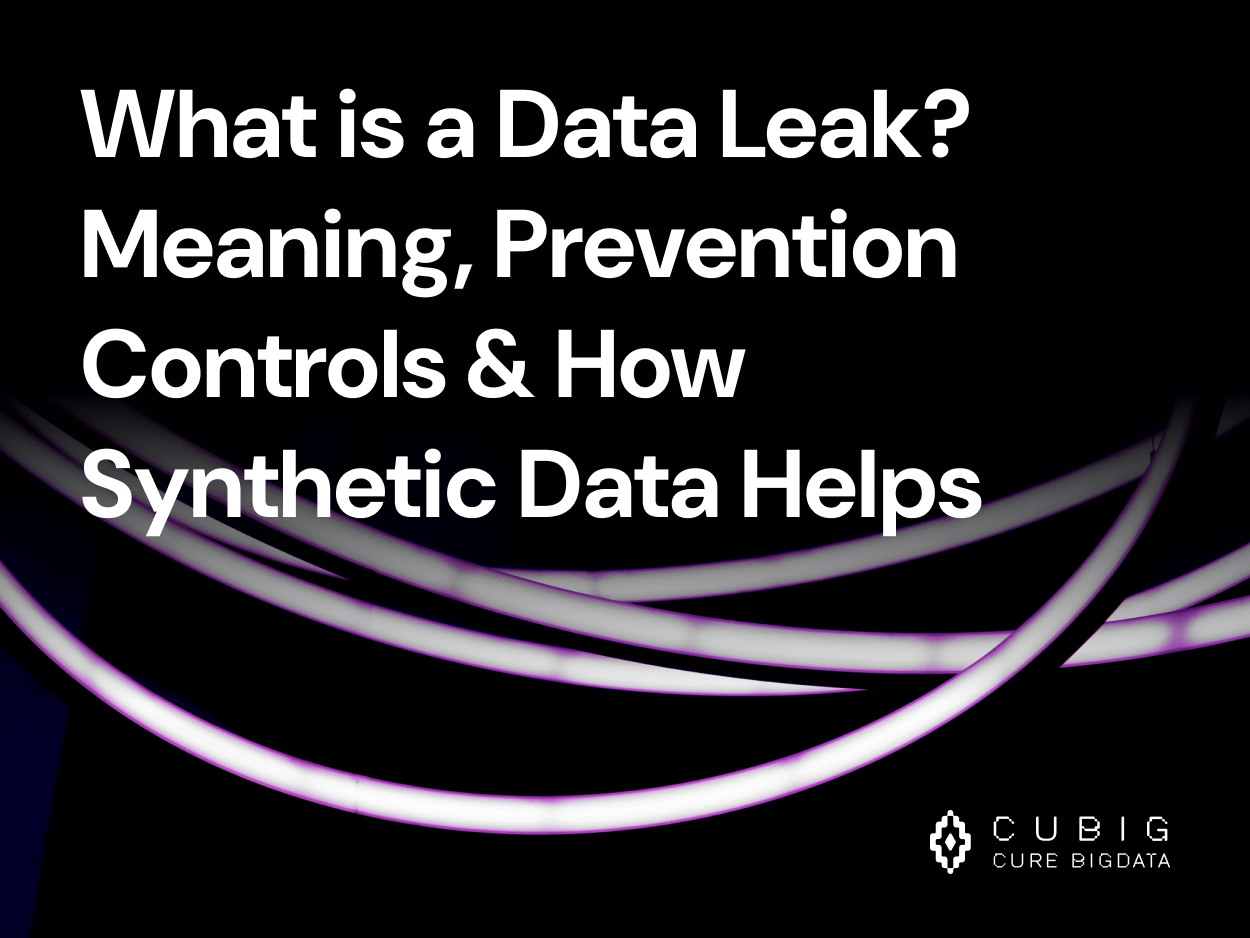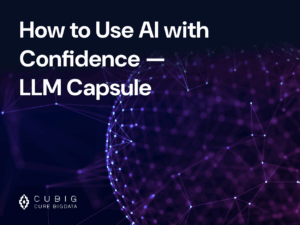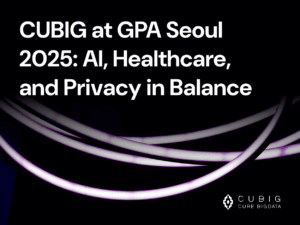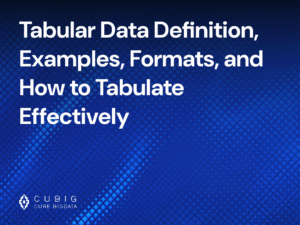What is a Data Leak? Meaning, Prevention Controls & How Synthetic Data Helps
Table of Contents
Introduction
1. Why Are Data Leaks Increasing with AI and Automation?
The spread of digital technology and artificial intelligence (AI) is changing how companies work with data. This makes many things faster and easier. But at the same time, accidents where private company data is leaked to the outside are happening more often.
Especially, new tools like generative AI (such as chatbots) and automation tools that run on the internet (called SaaS tools) are being used very quickly. But many companies start using them without setting up proper rules to control how data is used and kept safe. This creates new risks for security.
Some of the reasons for these data leaks are:
- If a company uses AI tools but doesn’t follow their own security rules, data can be leaked easily.
- People sometimes enter private or sensitive information into AI tools. This information can be saved on outside servers or even used to help train the AI.
- Mistakes in settings or forgetting to protect storage areas in automation tools can cause private data to be exposed without permission.
2. Why Privacy and Data Security Are Becoming More Important
Around the world, people and governments are asking for stronger rules to protect personal data. New laws like GDPR in Europe and CCPA in the U.S. are being used to make sure companies handle data carefully. If a company breaks these rules, it can be fined a lot of money and lose people’s trust.
Because of this, protecting personal information is not just a “security” issue anymore — it’s something that can decide whether a company succeeds or fails.
Here’s why this matters:
- Global privacy laws like GDPR are spreading and becoming stricter.
- There are worries that sensitive personal data could be misused during AI training or analysis.
- When personal data leaks, a company’s reputation and customers’ trust can be seriously damaged.
3. How Azoo AI Is Solving the Problem of Data Leaks
Azoo AI has built a smart technology to deal with the growing problem of data leaks. The company uses a special method called Differential Privacy (DP) to make sure that private information is never exposed or recovered — even when using data to train powerful AI.
With its system called DTS (Data Transformation System), Azoo AI can create private synthetic data. This means the system makes fake data that looks and works like real data but doesn’t include any private information.
Here’s how it works:
- DTS can make synthetic data without needing to upload the real data to outside servers. This keeps the original data safe.
- Thanks to Differential Privacy, no one can figure out the original data from the synthetic data.
- Even though the data is synthetic, it keeps the same patterns as real data — so AI models trained on it still work almost as well (over 99% performance!).
If you’re curious about how Azoo’s DTS works, you can learn more in the blog link below.
🔗 Why DTS is the Future of Secure Data Utilization

What is meaning of a Data Leak?
1. Definition & Explanation
A data leak happens when private or sensitive information is accidentally shared with people who shouldn’t see it. This can happen without any hacking or attack — just small mistakes can cause it.
For example, a company might have the wrong settings in their system, forget to control who can see certain files, or share data without thinking. These kinds of simple errors can still cause big problems.
In today’s world, many people use AI tools and automation systems. Sometimes, users type private information into these tools without realizing it. That data can then be seen by others or used again by the AI in ways they didn’t expect.
Key points:
- Data leaks can happen because of mistakes inside a company or by users.
- Even without a hacker, data leaks can be very serious.
- The more we use AI and automation tools, the more chances there are for data to leak in new ways.
2. Difference Between Data Leak and Data Breach
“Data leak” and “data breach” are often used in a similar way, but they are actually different in how the data is exposed and who is responsible. A data leak usually happens because of mistakes inside the company or poor system management, while a data breach happens when someone from outside steals the data on purpose. Companies need to prepare for both, but the way they respond should be different.
- Data Leak: Information is exposed because of weak rules, access errors, or internal mistakes
- Data Breach: Information is stolen by outside hackers or bad insiders
- Difference: Intent, who caused it, how security is used, and legal responsibility
| Item | Data Leak | Data Breach |
|---|---|---|
| Cause | Setting mistakes, user errors, misuse of access | Hacking, malware, insider attacks |
| Example | Publicly shared document, exposed S3 bucket | Ransomware attack, phishing-based access |
| Detection | Might not be noticed for a long time | Often found quickly by security systems |
| Legal Impact | Responsibility for poor management | Can lead to punishment for security failure |
3. Common Types of Data Leaks
Today, data leaks are no longer just caused by simple system mistakes. They are now happening in hidden and complex ways through how artificial intelligence (AI) and data systems are built. Even if the original data isn’t directly shared, private information can still come out again through what the AI has learned.
- Training Data Memorization:
Big language models or image generators sometimes “remember” parts of the real data they were trained on, like phone numbers, names, or conversations, and show them again. - Membership Inference Attack:
A hacker can figure out whether a certain piece of data was used to train an AI model, which can leak sensitive information. - Prompt Injection (in AI tools):
A tricky prompt can make an AI model say something it shouldn’t, like secret or hidden information from inside the system. - Re-identification Using Combined Info:
Even if each piece of data (like age, location, or shopping history) looks harmless on its own, AI models can put them together to guess who someone is. - Model Checkpoint or Log Leaks:
If parts of a trained model or its training logs are shared by accident, they might include private data examples or results.
These cases show that it’s not just data that can leak — AI models themselves can become a new way for private information to be exposed. So, keeping data safe means not only protecting storage, but also watching over the training process and the AI models that come out of it.
Azoo AI fights these risks by creating strong synthetic data without using the original data directly. They also use Differential Privacy to block any chance of leaking private info from the start.
How Do Data Leaks Happen?
1. Infrastructure vulnerabilities
Most AI models and automation systems run on cloud-based infrastructure, which creates new security risks. Environments that are built quickly often miss basic security settings, and this becomes a direct path for sensitive data leaks.
- Mistaken public access settings in cloud storage (like S3, GCS)
- No firewall or login protection for web applications
- Internal network structure exposed, allowing outside access
2. Poor access controls and policy mismanagement
Many companies still don’t manage data access properly. Accounts with too many permissions, lack of role-based access control (RBAC), and forgotten accounts of people who left the company all create chances for sensitive data to be accessed. This can cause developers or analysts to expose raw data without meaning to.
- Too much access given to developers or external workers
- No records kept of who accessed sensitive data
- Unnecessary shared folders or open version control systems
3. Training ML models on raw, sensitive data
Training AI or ML models with original, sensitive data is very risky. Even if the data was only used for training, the final model may still “remember” and show private data. Attackers can then guess or figure out the original data just from the model’s output.
- Training datasets include names, social security numbers, or addresses
- Large language models output original conversations or sentences
- Models reflect personal behavior or health data in statistical form
If you’re interested in learning more about how data leaks can occur through AI training, please refer to the blog link below.
🔗 AI Privacy Risks: 5 Proven Ways to Secure Your Data Today
4. Shadow IT & Unsanctioned Data Transfers
When employees use tools or services that aren’t approved (called Shadow IT), the company loses control over data security. During AI development, uploading or sharing data through outside APIs, collaboration tools, or personal cloud drives increases the chance of leaks.
- Uploading data to unapproved external servers or clouds
- Sensitive info appears in API test logs
- Sharing training data through personal laptops or chat apps
5. Legacy Systems and Unpatched Vulnerabilities
Even if the AI system is modern, the security is weak if the base infrastructure is outdated. Old systems and unpatched software are still easy targets for attackers. Some companies adopt AI quickly but keep using old backend systems, which increases the risk.
- Using operating systems that no longer receive security updates
- Connecting AI APIs to legacy systems
- Leaving known CVE (Common Vulnerabilities and Exposures) unpatched
Data leaks don’t just happen because of simple mistakes. They often come from weak spots in the way AI systems are planned, built, and used. To fix this problem, we need more than normal security tools. We need a better way to protect the data itself.
Azoo AI solves this problem by making strong synthetic data that works like real data—without ever looking at the original. This keeps private information safe from the start.

Data Leakage Prevention Controls You Should Know
1. Access control and encryption
The first step to protect data is to control who can access it and to use encryption. But in AI and machine learning systems, data doesn’t just sit in storage. It moves through many steps, like automation and processing, so the old ways of protection aren’t enough. Even if someone has limited access, once they see the data, it can be copied or used for training — and may never be private again.
- Data should be encrypted when it is stored or sent
- Developers and analysts need carefully controlled access
- We also need to think about what happens after data is accessed
2. Data masking and tokenization
Data masking and tokenization are ways to hide real information. They work by replacing private parts of data with fake values. But for training AI, these methods don’t always work well. Masked data loses important connections, which can make AI models perform poorly. Also, it’s sometimes possible to undo the masking and find the real data.
- Good for testing, but often not good enough for AI training
- If only part of the data is masked, it might still be possible to guess who it is
- A better way is to use data that has no private info at all
3. Auditing & monitoring pipelines
AI systems don’t just store data. They use it in many ways — like training, testing, and sharing models. During these steps, data can be copied, logged, or even sent out by accident. That’s why it’s important to track where the data goes and how it’s used. But just watching is not enough — we need to stop risks before they happen.
- Some models have accidentally shared private info in training logs
- It’s hard to notice when data leaks during daily operations
- The best way to stop leaks is to never use original data at all
4. Why traditional DLP tools are not enough in AI/ML workflows
Old DLP tools are made to catch data leaks in things like emails or documents. But AI and ML systems are much more complex. The model itself can remember data or show private info in a response. These are new and strange ways of leaking data that old tools can’t handle.
- New threats like prompt injection and model attacks are appearing
- Hackers are getting better at finding and guessing training data
- We need to stop leaks not by watching, but by using different data
5. Where Synthetic Data Fits as a Preventive Measure
A strong solution to these problems is private synthetic data. This kind of data is not just a copy of real data. It’s created from scratch, using patterns from the real data but without ever touching it. Azoo AI’s synthetic data is made for AI training, so it works like real data but doesn’t include anything private.
- No access: It’s made without seeing the original data
- Differential Privacy: No one can guess the original from the fake
- Works well: Models trained on it perform 99% as well as with real data
- Follows laws: Helps follow rules like GDPR and HIPAA
Now, the best way to protect data is not just to hide it — but to never use the real data at all. Azoo AI shows how to make this possible.
How Synthetic Data Can Eliminate Data Leak Risks
Synthetic data is no longer just a tool to make development easier. It is now an important technology that helps stop data leaks and also gives AI models the high-quality data they need to learn well.
Azoo AI’s private synthetic data makes it possible to train strong AI models without any risk of leaking personal information.
1. Real data never exposed during model training
The biggest benefit of synthetic data is that it does not use real data at all for training. Most data leaks happen when people use real data during AI model development. Azoo AI solves this by never touching the real data. Instead, it only uses general patterns to create completely new, fake data.
- The person or company sharing the data doesn’t need to send the original
- No risk of the AI remembering or showing personal information
- Fits company rules and customer privacy requirements
2. Fully anonymized yet statistically consistent datasets
Old types of “anonymous” data often lose quality and cause bad results. But Azoo AI’s private synthetic data keeps the important patterns while making sure no one can find out who the data is about. It works like real data but contains no personal details.
- Copies real data’s patterns, relationships, and unusual cases
- Uses special algorithms that make re-identification impossible
- AI models trained with it can perform 99% as well as with real data
3. Usability across cloud environments without privacy risks
Because synthetic data doesn’t have any real private info, it can be safely used in cloud systems or shared with partners. This is helpful for companies that face legal rules about data location or international data transfers. It also makes it easier to use AI in multiple cloud environments without security worries.
- Can be safely shared in SaaS, with partners, or outside researchers
- Avoids legal issues like GDPR or HIPAA data location rules
- No chance of leaking personal data, even when training happens outside the company
4. Azoo AI’s synthetic data pipeline as a compliance enabler
Azoo AI offers more than just a tool to make synthetic data. It gives a full system that helps companies follow privacy laws. Their technology creates synthetic data without ever touching the original, uses Differential Privacy to block tracking, and keeps records to help with audits. This means companies can “use data without actually using it.”
- Full separation from the original data — no access needed
- Differential Privacy stops attacks that try to guess real info
- Auto-logging and reports help with audits and legal checks
- Already used in sensitive areas like healthcare and finance
Why Azoo AI’s Approach to Synthetic Data Is Built for Privacy-First AI
1. Technical overview of our privacy-preserving pipeline
Azoo AI’s system can create synthetic data without ever touching the original data. That means the company that wants to use synthetic data does not need to send their real data to anyone else.
- The original data is never sent to other systems or models
- The model learns using a secure voting process and only statistical patterns
- The final result has no personal details and is safe to use
2. Key technologies: differential privacy, edge synthesis, zero PII policy
Azoo AI’s private synthetic data uses three important ideas to protect privacy:
- Differential Privacy: Adds small, random changes (noise) to the data to hide personal details, while still keeping overall patterns
- Edge Synthesis: Creates data safely at the local site, without sending real data away
- Zero PII Policy: No personal information is ever used, shared, or stored
3. Case: Healthcare & finance projects with strict compliance needs
Azoo AI’s technology is already being used in areas with very strict privacy rules, like healthcare and finance. These fields usually can’t share real data, but with private synthetic data, they can still build powerful AI.
- Healthcare example:
A hospital makes synthetic data from patient history without seeing the real records.
→ This helps train medical AI without breaking privacy laws or hospital rules. - Finance example:
A bank creates synthetic transaction data without using real customer info.
→ This allows different companies to work together and test models without moving private data.
4. Diagram: How Azoo AI integrates leak-proof data into AI pipelines
Azoo AI stops data leaks from the very beginning — during the system design stage.
The image below shows how Azoo AI’s pipeline works:

This setup means that even though the AI is trained well, no real data is ever shared. It’s safe, private, and still works just like using real data.
Conclusion
Data leaks are becoming more advanced, and the growth of AI and machine learning only increases these risks. Today, data security is not just about protection — it is a structural decision that shapes how AI is designed safely.
Azoo AI provides a solution built specifically to solve this problem through private synthetic data. This technology goes far beyond simple anonymization.
Azoo AI generates synthetic data without ever accessing or sharing the original data. Instead, it uses statistical processing and a securely designed voting mechanism to create safe, useful data.
- The original data is never sent to external systems or generation models
- The model learns only from indirect statistical signals
- The final synthetic data removes all re-identification risks, making it legally and technically safe
Azoo AI doesn’t just “edit” data — it transforms how data is used.
For companies that want both security and performance,
For organizations that need to use data responsibly in the age of AI,
Azoo AI offers a real, practical path to Privacy-First AI.
Now, AI without sensitive data is not just a choice — it’s the new standard.
Azoo AI is setting that standard.
CUBIG's Service Line
Recommended Posts









